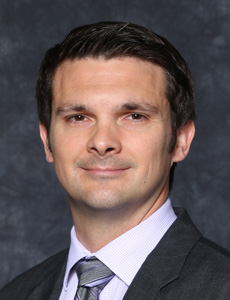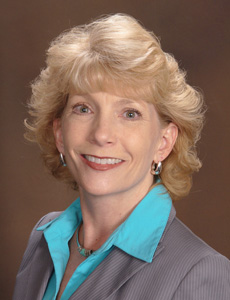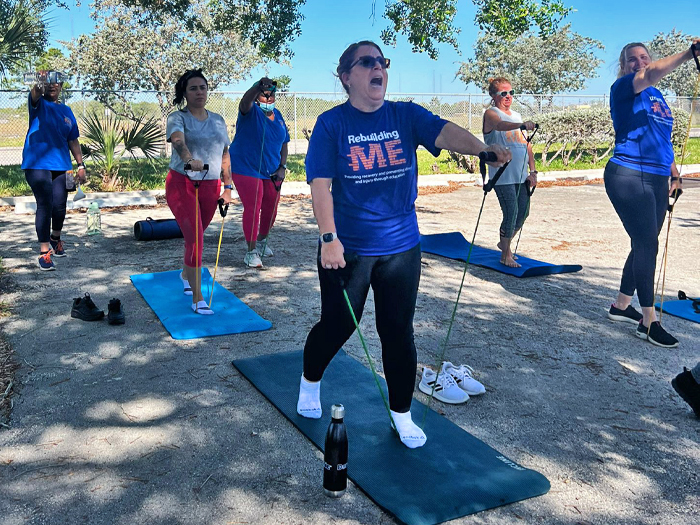Risk Management
The Upside of Risk

In 2012, the LEGO Group considered increasing its investment in the fast-growing Chinese market.
A year later, it began weighing whether to build a sales and distribution presence in China. The company had existing sales hubs in Connecticut, London and Singapore. That required the Danish toy company to consider the potential opportunities of such a move as well as the potential risks.
“There is a tendency for people to look on the negative side of risk, but the objective from my point of view is mainly the positive,” said Rico Ferrarese, who was with LEGO Group’s strategic risk management department until recently moving into an operational role.
Hans Læssøe, senior director of strategic risk management at LEGO, created the department in 2007. It focuses on company strategy. It doesn’t handle insurance, safety, claims or other traditional risk management responsibilities.
“Insurance has value but it doesn’t help you develop your business,” he said.
“How do we help management make better decisions — decisions that are better informed about the uncertainties? … To me, that’s much more proactive,” he said.
“I think a lot of risk managers right now are hampered by the fact that they are coming from an auditing or insurance business,” Læssøe said. “They want to make sure everything is covered. They have not been trained or asked to look at opportunities. They have not been asked to support decision quality.”
Focusing on the positive side of risk is unnatural for many risk managers. There’s a reason many executive and operational leaders dub such departments, the “department of no.”
By the same token, it also is uncommon for the C-suite or operational leaders to rely on their risk managers when they are contemplating strategic moves. They often fail to recognize the tools that risk managers can bring to the table to help assess potential opportunities and challenges.
Generally, it is only when a strategy moves forward that the organization informs the risk manager as a prelude to securing insurance protection.
“All too often, risk managers get called in after the decision has been made,” said Elizabeth Carmichael, director of compliance and risk management for Five Colleges Inc., which includes Amherst, Hampshire, Mount Holyoke, Smith College and University of Massachusetts-Amherst.
Risk managers who successfully integrate themselves in C-level discussions often must take the initiative themselves. They ask questions and develop relationships throughout the organization. They make sure they understand the entire business and its operations.
They ask key leaders what would help them do their jobs better, and then follow through with ways to help.
Strategic Uncertainties
When LEGO considered going into China, it used a scenario process known as “Prepare for Uncertainty.”
“There are a lot of things we don’t know about China and especially China five years from now when we would be up and running,” Læssøe said.
“We have a set of uncertainties.”
Among them: What is the retail distribution structure like? Is it like the United States, with a few very large toy distributors, or like Germany, with “a gazillion and one small stores?” Or is it a combination of the two?
What are the consumers like? Will they want the same products as the American market, or will LEGO need to create different colors, heroes and concepts geared to the Chinese culture?
“How do we help management make better decisions — decisions that are better informed about the uncertainties?” — Hans Læssøe, senior director of strategic risk management, LEGO
Læssøe facilitated a structured discussion with the leadership team responsible for deciding whether to enter the Chinese market. Using Post-it notes, each team member team individually listed their “two most important uncertainties” about the potential move.
It was done that way to prevent group-think.
“We don’t even consider whether things are a risk at this time,” Læssøe said.
For three hours, the team talked through the ideas as they placed the notes two-by-two across on the table.
The leadership team then used the “Park Adapt Prepare Act” (PAPA) model.
“We prioritized them, not based on impact. The impact is inherently high. We look at the likelihood, low or high. Do we believe it will happen or not, the speed it might happen and our agility to respond,” Læssøe said.
If an issue was not likely to happen or offered sufficient time for the company to respond if it did, the uncertainty was “parked” on the side. Eventually, the only issues left on the table were those with a high likelihood and a short amount of time to respond.
All of the items had the potential to be both risks and opportunities, he said. “Now, we look at the issues we need to address.
“We want to make sure our strategy is resilient in a world that probably will change in a different way than we expect,” he said.
“What will give you a competitive advantage in the future world is maneuverability or agility.
“Competitiveness to me is like a penicillin for the flu. It can get you nauseous and uncomfortable but it makes sure you are on your toes and don’t get really, really sick,” he said.
LEGO started building its factory in China a couple of years ago.
“It’s just about finished,” Læssøe said.
On the Cutting Edge
LEGO’s strategic risk management process is “probably the leading edge of best practice,” said Andrew Bent, manager, enterprise risk management, Alberta Energy Regulator, in Calgary, Canada.
Bent, who is chair of the RIMS strategic risk management development council, said that more risk managers are recognizing that they must create as well as protect value for their organizations.
“Risk managers shouldn’t be the ones saying, ‘No, no, no. It’s too risky.’ They should be working — and many now are working — to provide the organization with the information needed to make good decisions,” Bent said.
“Risk managers are now asking, ‘How do we actually create value for the organization? How do we support the business strategy?’ ”
It’s about ensuring decision-makers have solid information about both the upside and downside of a potential strategy, he said. When that happens, the leadership takes accountability for the decision and is able to explain to their shareholders or board the reasons behind decisions and what controls were put in place.
“Over the last few years, we have seen much more emphasis on the C-suite and boards to be actively engaged with risk management, to really understand what is going on,” Bent said.
“Risk managers shouldn’t be the ones saying, ‘No, no, no. It’s too risky.’ ” — Andrew Bent, manager, enterprise risk management, Alberta Energy Regulator
“The implication for the risk manager is that we must be prepared to answer their questions. Most risk managers I talk to see this as the opportunity they have been looking for and waiting for.
“The organizational culture has to be ready to receive and ask for information about risk, and risk managers must be better prepared to not only give the information they are asked for, but also the information the organization needs to hear,” Bent said.
Adding value to the organization takes many forms. It is as individual and specific as each organization’s operations.
When Bent was working in risk management at a law enforcement agency, the city he worked for had the highest murder rate in Canada.
“In addressing this serious community problem, we needed to think beyond the very obvious downside. We had to ask, ‘What is the value that risk managers can add to our organization?’ ”
The downside, or traditional approach, he said, would have been a push to ban knives and increase police patrols.
Instead, the agency focused on the potential opportunities. It began to coordinate activities with social service organizations, such as homeless shelters; employment, training and housing agencies; mental health and addiction centers; and others; to bring more organized support to residents, he said.
“They were doing great things without a lot of coordination,” Bent said.
“Is this our job as a police agency to coordinate? Perhaps not in a traditional model. But we manage the downside of the risk, so we thought it was more useful to manage to upside first so we don’t get to that point.
“It was about bringing together all of those pieces and putting the right people at the table to have those conversations and make sure they are risk informed and understand the good, the bad and the ugly,” Bent said.
In another situation Bent is aware of, a construction company facing a range of safety issues decided to focus on the upside economic advantages of creating a strong safety culture to prevent further injuries.<
Leaders who had higher rates of injuries on their sites were also the ones who tended to have more re-work on their jobs, and the sites used more materials. By addressing the safety culture, those sites became more profitable.
Supervisors and foremen were trained, performance indicators were created, unions were consulted, and if workers refused to transition to the new safety climate, “they were no longer welcome on the company’s worksites,” he said. “It was costing money and hurting people.”
“By addressing the safety culture, the company was able to control downside risk and also improve profitability.”
A New Way of Thinking
It’s challenging for many risk managers to think about the positive side of risk, said Joanna Makomaski, president of Baldwin Global Risk Solutions Inc., and a columnist for Risk & Insurance®.
The Institute of Risk Management in London recently honored Makomaski as Risk Management Professional of the Year for her work on the Toronto 2015 Organizing Committee of the Pan/Parapan American Games.
Too many risk managers equate risk management with the company’s insurance portfolio, Makomaski said.
“When you rely only on insurance, in essence, you are waiting for something negative to happen and you can only mitigate the consequences.
“I am an advocate of identifying what your opportunity risks are, but you also have to look at the possible collateral damage of that risk,” she said.
For example, utility companies have a great opportunity for increased revenue during long, cold winters. At the same time, however, those companies may find that more people can’t pay their bigger bills. That can result in default risk on bill payment and a social responsibility risk.
“When you rely only on insurance, in essence, you are waiting for something negative to happen and you can only mitigate the consequences.” — Joanna Makomaski, president of Baldwin Global Risk Solutions Inc.
“That’s the challenge: Should the utility cut off their heat in the middle of a frigid winter? All of a sudden, even though this really good thing is happening, there are other risks to consider.”
In exploring opportunities, risk managers must consider their organization’s risk appetite, its tolerance for periodic excess risk, and the possibility that the failure to take a risk can have a negative impact. An example would be the way the manufacturers of the BlackBerry phone overlooked the risk posed to it by the iPhone.
“Given that risk is integral to the pursuit of value, strategic-minded enterprises do not strive to eliminate risk or even to minimize it,” according to “Risk Management in Practice” by Deloitte.
“Rather, these enterprises seek to manage risk exposures across all parts of their organizations so that, at any given time, they incur just enough of the right kinds of risk — no more, no less — to effectively pursue strategic goals. This is the ‘sweet spot,’ or optimal risk-taking zone.”
When risk managers understand a company’s potential exposures and the company’s risk tolerance, they can be in a position to tell the organization it can take on even more risk than they think, said Læssøe of LEGO.
Makomaski said she sometimes uses a “global heat map” to illustrate possible risks and returns of potential business strategies.
A heat map plots the likelihood and impact (ranging from very low to very high) of a strategy, including such potential risks, for example, as supply chain disruption, economic downturn, customer preference, new or increased competition, etc.
It’s important to note that such risk assessments are only as good as the data.
“Assessments are vulnerable to the garbage in, garbage out rule,” Makomaski said.
Marti Dickman, vice president, risk management, Advanced Disposal, said her risk management department is designed to “be the instrument that enables senior management to contemplate all of the risk factors and make good sound decisions about how to manage risk on the front end, recognizing we will still have a downside of risk.”
One way her department looks to add value is when the sales and marketing department negotiates with customers.
“They engage us right away and we offer suggestions for [contract] language, coverages that perhaps the customer has missed that we can provide,” she said.
“We can offer recommendations on how a component of the contract could be changed to create a value add and allow us to win the business. It gives us a competitive edge,” Dickman said.
“I work with my team so that my folks are not seen as the ‘no people.’ We want to be the ‘go-to people.’ The direction my team is charged with is to explain the challenges we see and the opportunities to make something even better.
“Instead of looking to avoid risk, we help them understand the risk on the front end so decision-makers can use that to make informed decisions. Ultimately, it will depend on the risk appetite of your company,” she said.
Carmichael, of Five Colleges, said most of her risk management colleagues “are pretty skilled at understanding the upside of risk.”
“We get requests for all kinds of interesting projects within higher education,” she said.
“Our students and faculty are very creative and the administration is often looking to do things that are innovative.
“When asked to do a risk assessment, it may be wise to ask the administrator, ‘Are you looking to say yes or no,’ because that way you have a better sense of what direction they are working toward.
“If they are looking to say no, the task is fairly easy because you can probably come up with many things that can help the school say no,” Carmichael said.
“But don’t leave off the upside of the activity, as other administrators are likely to want to weigh in at some point.”
In one instance, an honors student with a circus project wanted to bring a trapeze event to campus. Participants would have the chance to learn how to swing on and transfer from one trapeze to another.
“The upside of the risk was great. It would be an on-campus activity that would engage a large number of people in the community, both staff and faculty. It would bring the campus together and give people an experience they might not otherwise have in a relatively low-risk environment.
“The obvious downside [to the event] was that someone could have been hurt or there could have been some other snafu, for lack of a better term, with the project,” she said.
“As the risk manager, in collaboration with other administrators, we were able to ensure that our facilities staff and public safety officers were on board.
“We also worked through a very well-reasoned and balanced contract with the trapeze company and used waivers to help spread the risk to the participants. We had an extremely successful event.”
Supporting the Business Plan
“When you invest in something,” said Ferrarese of LEGO, “it must have a positive outcome. You may not be able to put a financial outcome on it, but there is a positive reason we are doing it.”
“The key challenge,” said Dickman of Advanced Disposal, “is to overcome the traditional view that many people have of risk management.”
While that may be slowly changing among senior leadership, the onus is on risk managers to “reach out and take that initiative if the culture sees risk management in that more traditional role. Push forward,” Dickman said.
“Don’t be discouraged. Make inroads so people see you as a resource and benefit so they will want to bring you in at the beginning.”
At the same time, some risk managers need to change their own mindset.
“Instead of being risk averse, we need to understand there is a benefit to taking on more risk — when we do so in a controlled way,” she said.
Carmichael suggested risk managers “look for ways to engage in conversations about getting to ‘yes’ rather than starting at ‘no’ … and getting carried grudgingly along.”
They also need to educate senior leadership. “The more aware your senior officers are about risk and risk management, the more likely risk management will be called in before a decision is made,” she said.
Makomaski said one way to gain traction and engagement is to “dance to the rhythm of the business.”
“I like to attach myself to an agenda or internal system that is working and risk adjust that,” she said.
“Make yourself an enabler to the strategy. My job is to enable the risk to happen within the bounding risk position of the organization.” &













